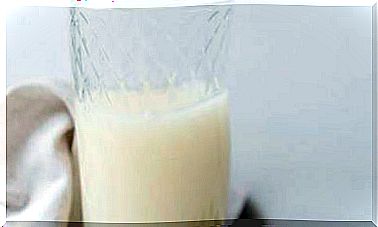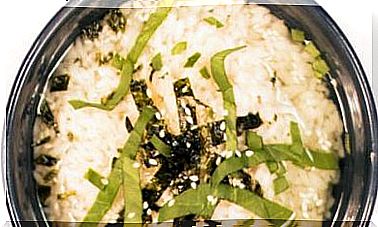Your Heart Is Smarter Than Your Brain
We have always known that some decisions made with the heart end up imposing on those thought with the head. Now we know a little better why.

It is not a title for an article. My son, now thirteen, told me, a couple of years ago, walking along a beach in Zanzibar. We were talking about a simile with the population of neurons that “inhabits” the human body, understood not as an individual but as an ecosystem for the cells that form it.
Neurons are not limited to the brain
Neurons, nerve cells, are grouped into three large cities connected by roads (nerves and blood vessels): the brain, the digestive system, and the heart. Those of the heart live in a small city compared to the overcrowding of the huge city, almost a country, that represents the brain. New York in the brain, Barcelona in the digestive system and Stone Town in the heart, we said. And we concluded that, despite being a minority, strictly speaking, it was those of the heart who “ruled”, not from the imposition – a fateful and miserable formula for “command” -, but from the “conviction.”
The “sensations” originating in the heart led our consciousness to better and also faster responses in emergency situations than the thoughts elaborated in the power centers of the great metropolis of the brain.
What are “hunches”?
It can be explained in another way. Since the end of the last century and in the nineties, we know that 40,000 neurons reside in the heart, the same as in a single cubic millimeter of the brain.
Ignorant of this “detail” until twenty-five years ago, we always knew, however , that there are decisions that are made with the heart or that there is what is called a “hunch”. Trusting the “guide” in instinctive thinking dictated from the heart was always a behavior associated with a certain uncertainty because we were often told that important decisions had to be made with a cool head and not with a warm heart.
Rudolf Steiner – philosopher, writer, educator – knew nothing about the neurons of the heart and, instead, defined this organ as a sensitive, perceptual and intelligent center.
How does our most “cerebral” heart work?
Today we know that we make decisions with the heart really and not in a figurative sense. The neurons of the heart have memory, learn, remember and perceive. Today, from the rationality of science, more “quantum” and less “Newtonian”, we know that the heart sends more signals to the brain than it receives from it. It does so through four biological communication strategies between the cardiac and cranial brains:
1. Neurological mechanisms
Receptor centers in the cranial brain can be neurologically inhibited from the brain of the heart . In other words, the heart influences the perception of reality and, consequently, the responses we give, our reactions.
2. Biochemical mechanisms
A small 28 amino acid peptide, called atrial natriuretic peptide (ANP), atrial natriuretic factor (ANF), atrial natriuretic hormone (ANH), or atriopeptin, is synthesized in heart muscle and is the modulator of homeostasis.
In 1865, the physician and physiologist Claude Bernard defined homeostasis as the dynamic balance that keeps us alive.
What practical meaning does that have? Which can inhibit the production of stress hormones (adrenaline, norepinephrine, dopamine) and stimulate the production of oxytocin. It’s not little!
3. Biophysical mechanisms
Changes in heart rhythm modulate communication through pressure waves sent to the rest of the body.
4. Electromagnetic mechanisms
Finally, the heart generates an electromechanical field of enormous power, five thousand times more powerful than that of the brain. This field is modified according to the emotional state. It is more harmonious in states of satisfaction, positive thinking, trust and tranquility, and instead it is more irregular or chaotic in states of alert (fear, frustration, danger).
The electromagnetic field reaches up to four meters outside our body. That explains why, sometimes, we synchronize our heart with that of another person when we are within this physical zone of influence: the baby and the mother, two people who love each other more from tenderness than from passion …
Sometimes this mechanism is even used as a defense strategy against potential danger (thousands of small individuals with tiny hearts beating synchronously, for example in the sea, can give rise to a powerful electromagnetic field that will confuse a predator into believing that they are is about “someone” really great).
How to put the brain and the heart in agreement?
Once the “connection” between both brains, cardiac and cranial, is understood, we can ask ourselves how and who modulates whom and what consequences the fact that one comes to influence the other is going to have. What is coming now seems like science fiction: the heart rhythm and the brain waves can be synchronized so that it is “the heart that carries the head.”
How? With what drug substance? With no one. Enough with the induction of positive thinking. If they are harmonized through positive emotions and thoughts, we could modulate an intelligent state of consciousness that would fit the definition of the concept “love” from a not so emotional but more neuroscientific perspective. The eradication of negative feelings such as fear, distrust or anger would be theoretically possible from something as elementary as the synchronization of the heart rate with the brain waves.
The fusion between states of biological coherence created by the brain of the heart could lead us to a state of higher intelligence activated through positive emotions. Perhaps this is a new evolutionary milestone in human history.
The brain of the heart activates the brain of the skull and transports us to a dimension of exact perception of reality, no longer based on the memory of what has been lived previously (the experience) but to a new paradigm in which knowledge would be generated immediately and instant.
The truth is that this human ability or capacity, today, certainly seems underused. It is still a barely activated potential, only available to a minority of individuals, but the important thing: it is accessible to all. How can we develop it?
Freeing us from fear
- Cultivating the qualities of the brain of the heart that would result in actions as basic as knowing how to listen (to children and, in general, to others), correctly managing patience, stimulating cooperation and teamwork, being willing to be really tolerant, understanding differences and living them, expressing gratitude, offering compassion or overflowing affection, would allow us to free ourselves from the three primary mechanisms: fear, desire and dominance, which perhaps have come evolutionarily well for us in other times and circumstances, but which today They enslave, they are the source of great tensions and pain and of a disturbing search for “something” that we cannot find anywhere.
- The ability to take a position more of an observer-witness than a judge-tax would help us to reach this new state of mind directed from the heart.
- Learning to trust intuition and recognize the origin of our emotions does not lead us to a better perception of external reality but of our interior, much more important.
We frequently hear and read about the benefits of elementary actions that will improve our moods, decrease stress, and optimize our abilities. We often find them very basic and elementary.
- Listening and perceiving silence, contact with nature in a contemplative sense, a certain simplicity in the model of life, meditation if it is an instrument within our reach or the enjoyment of temporary solitude, can help us to feel our interior.
And all based on the “brain work” of 40,000 neurons in the right places!









